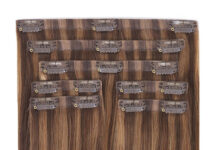Though the term is not new, some may not be familiar with the sublimation procedure. Do you know what sublimation printing is? Read on to find about the term and how it meets your printing needs.
About Sublimation Printing
Since the customized items are the new trend, there are many ways you can get the logo of your brand printed on any of the products. This artwork can be utilized for promotions and can be created using the sublimation method. The dye sublimation method is another name of the process and it involves the transfer of image into a substrate.
The printing method uses sublimation ink and a printer to print on the sublimation transfer paper. Further, the sublimation paper is used to assign the ink to the substrate. Thus, the ink becomes a part of the substrate you print upon.
The question here is how this method is different from other methods! When we describe the inkjet transfer printing mode, only the ink gets printed on the top of the substrate. The other difference is the dye sublimation printer doesn’t pass the liquid state, unlike other printing methods that go through three states of matter.
What this means is that ink does not get transformed to water and gets consolidated with the substrate while it is in the gaseous state. Further, the ink stiffens as it gets merged with the substrate and forms the logo or image you have created.
How Does The Sublimation Process Work
You may be curious to know how it works. The first step is to print the aspired image on a sublimation transfer paper with the sublimation ink and a printer. Further, the transfer paper and the substrate will pass through the heat process to around 375 degrees temperature.
This heat press lets the sublimation ink and transfer paper transform into a gaseous state. During this state, they flow through the substrate material. How it gets done by the heat releasing the gas of sublimation ink and opening the orifices of the substrate.
When the transfer paper and substrate get removed from the heat press, the sublimation process takes place. The ink that has been flowing through the substrate material gets hardened and the pores get closed permanently. Ultimately, the ink will remain in its place!
If the method is carried out perfectly, the printed image won’t get faded. It wears out only if the substrate crumbles. There is an alternative too! You can also apply the ink directly to a polymer-coated substrate which gets bonded with the substrate in the heat.
Materials For Sublimation Printing
Before heading to sublimation printing services, you should be aware of the materials that can or can not be used with sublimation printing. Check out the list of some common fabrics that can be used!
- Polymer
- Polyester
- PVC
- Polyester-coated aluminum sheet
- Polyester made fabric
- Polyester-coated metal
- Ceramic Tile
- Polycotton Textile
Best Sublimation Printer
Many of the sublimation printers are offered by different brands. Some common brands are Sony, Epson, and Kodak among others. Pick up a printer that is specifically for sublimation printing along with different features, meeting your particular needs.
Dye Sublimation Ink
Since it is the main component of the process, the sublimation ink is the dye dissolved in a liquid solvent, which is like a water-based solution. The dye sublimation ink is specifically used for the sublimation and results in the best quality images with gleaming colors.
Is The Process Eco-Friendly?
Indeed, dye sublimation printing is suitable for the environment! It leads to minimum waste and does not use water with heat transfer technology.
The other plus point is that the dyes being used are completely safe. They neither cause any health risks to the people nor to the environment. Along with the safety, but are viable too. The sublimation process utilizes a very small amount of dye.
What’s more? One sublimation all over print shirts can be used multiple times. You can refer to it as frazzled printing. The received printing would not be as embellished, but the decreased effect can also produce unique designs.
Next is the use of sublimation transfer papers as a substance for other works. You can also use it in the form of gift wrappers or stationary.
The last one is the eco-friendly substrate that can be used for sublimation printing. So, instead of using the new polyester, you can use the recycled one as well. All these plus points make sublimation printing a safe and sustainable production process.
Advantages
Now that you have got the idea of sublimation printing, it’s time to go through the advantages and limitations of the process. The printed images don’t fade with time, creates a smooth finish, allow you to print the full-colored transfers.






